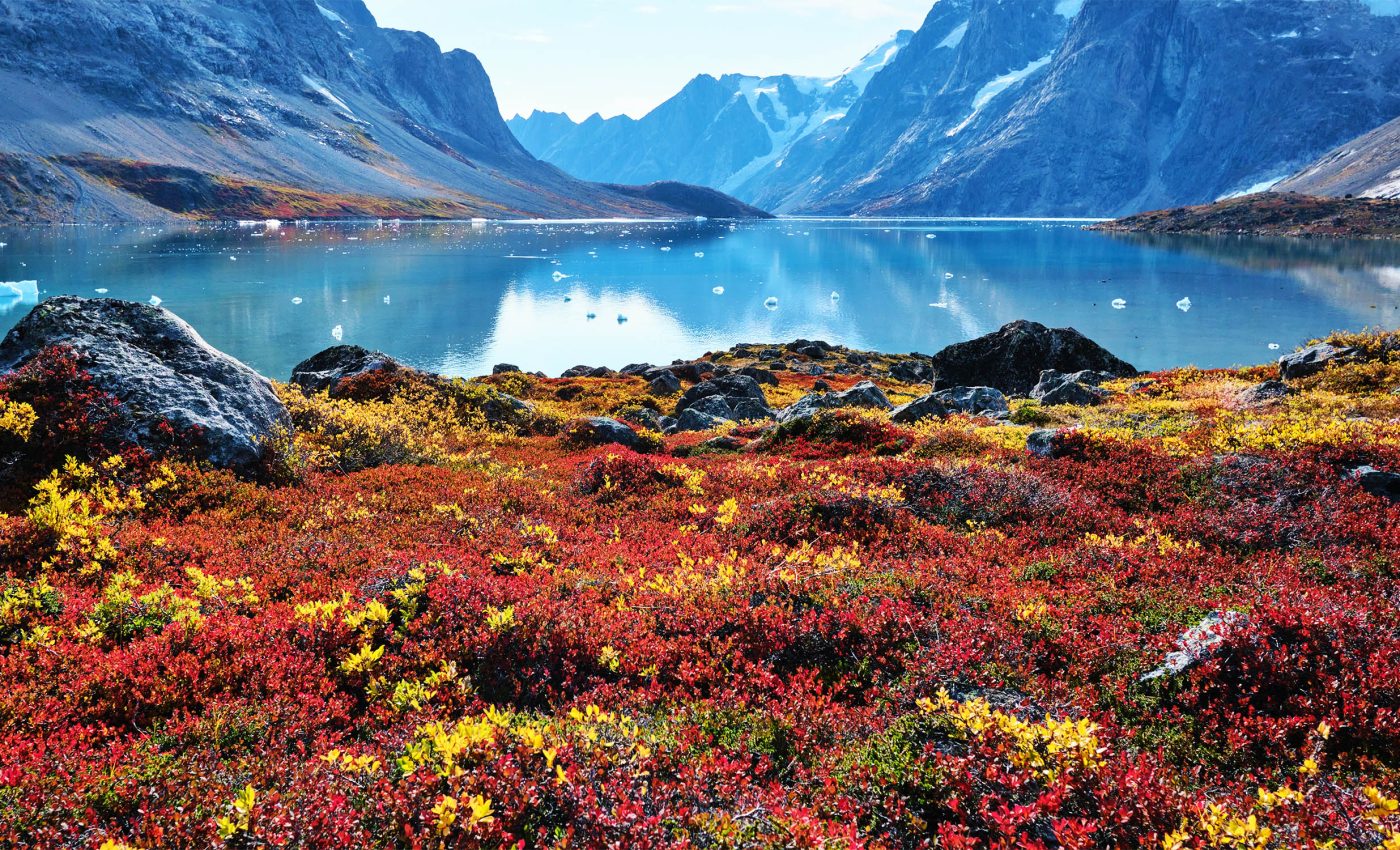
Greenland is warming and melting much faster than the rest of the world
The earth is no stranger to temperature fluctuations, but our planet’s icy crown, Greenland, is currently experiencing warming that surpasses global averages.
This accelerated warming has consequences beyond its ice-capped edges, affecting sea levels worldwide and threatening coastal ecosystems.
But why is Greenland warming at a faster rate than its planetary peers? It’s a mystery that a group of intrepid researchers from South Korea set out to solve.
Warming trends in Greenland
Arctic Amplification, the phenomenon of intensified warming in northern regions, is a growing threat to Greenland’s frozen landscapes.
Past research has associated this occurrence with various factors, including local climate feedback processes, temperature boosts from the Arctic Ocean, and heat transport from the south.
As summer’s warmth melts sea ice, less sunlight is reflected back into space, further fueling this warming cycle — a process known as surface albedo feedback. Yet, the precise causes of specific, extreme temperature events have often been overlooked.
A fresh perspective
Enter Professor Kyung-Ja Ha from Pusan National University, South Korea, and her team of climate sleuths.
The group, including Manuel Tobias Blau from Pusan National University, and Dr. Eui-Seok Chung from the Division of Atmospheric Sciences at Korea Polar Research Institute, studied Greenland’s mysterious warming trends from 1979 to 2021.
The team’s work was underpinned by a surface energy budget framework, which separates the influence of radiative and non-radiative sources on temperature anomalies.
Their research illuminated two main culprits behind Greenland’s temperature surge: an increase in clear-sky downwelling longwave radiation and a resultant effect on surface albedo feedback.
Domino effect of Greenland’s warming
Through their investigations, the researchers discovered that the primary driver for the increase in clear-sky radiation was a rise in atmospheric temperature.
When warmer years rolled around, heightened surface temperatures teamed up with tropospheric warming to stir up turbulent heat exchange between the atmosphere and the surface.
The aftershock of this process stretched far and wide, boosting moisture transport from the south to Greenland.
This event sparked the formation of a high-pressure system, akin to a blocking anticyclone, which effectively trapped and maintained the warm conditions.
Ice-melting result
As this high-pressure system took hold, Greenland was plunged into a cycle of intense ice melting. This, in turn, intensified the warming effects — a troubling feedback loop.
Adding complexity to this climate puzzle, modes of natural climate variability, particularly those linked to the blocking index, could either exacerbate or counteract these warming trends leading to extreme temperature events.
Impact on future climates
“In this study, we focused on the year-to-year perturbations of the surface energy budget to explain Greenland’s extreme temperature,” says Prof. Ha. The results have broad implications for our future if left unchecked.
“The extreme summer temperature over Greenland will further accelerate the ice sheet melting, leading to rapid sea level rise,” Prof. Ha warns.
This important research offers key insights into the causes of Greenland’s extreme summer temperatures, highlighting the importance and urgency of implementing strategies to prevent further degradation.
Human activity and Greenland warming
While natural phenomena certainly play a part in the climate dynamics affecting Greenland, human activity cannot be overlooked.
The burning of fossil fuels has significantly increased greenhouse gas concentrations in the atmosphere, contributing to global warming.
As temperatures rise globally, the Arctic suffers disproportionately. A spike in carbon dioxide and methane emissions heightens the greenhouse effect, trapping more heat in the atmosphere and exacerbating the thermal shifts observed in Greenland.
The intricate relationship between anthropogenic influences and natural climate systems highlights the critical need for comprehensive climate policies that address both local and global factors.
Path forward
Given the urgency of the situation, there is a pressing need for innovative solutions to mitigate the impacts of climate change in Greenland and beyond.
Enhanced monitoring and research initiatives, as spearheaded by Professor Ha and her team, will be crucial for informing effective response strategies.
Collaborative efforts between nations, scientists, and policymakers can lead to the development of adaptive measures aimed at reducing greenhouse gas emissions and protecting vulnerable ecosystems.
By prioritizing sustainability and resilience, we can work towards a future where the delicate balance of our planet’s climate is preserved for generations to come.
As climate sleuths like Professor Ha and her team continue their invaluable work, we inch closer to understanding our planet’s complex climate systems.
With each success, we grow a little more capable of safeguarding our environment and future. So, the question stands, what can we do today to protect our tomorrows from Greenland’s amplified warming trend?
The study is published in the journal Communications Earth & Environment.
—–
Like what you read? Subscribe to our newsletter for engaging articles, exclusive content, and the latest updates.
Check us out on EarthSnap, a free app brought to you by Eric Ralls and Earth.com.
—–













